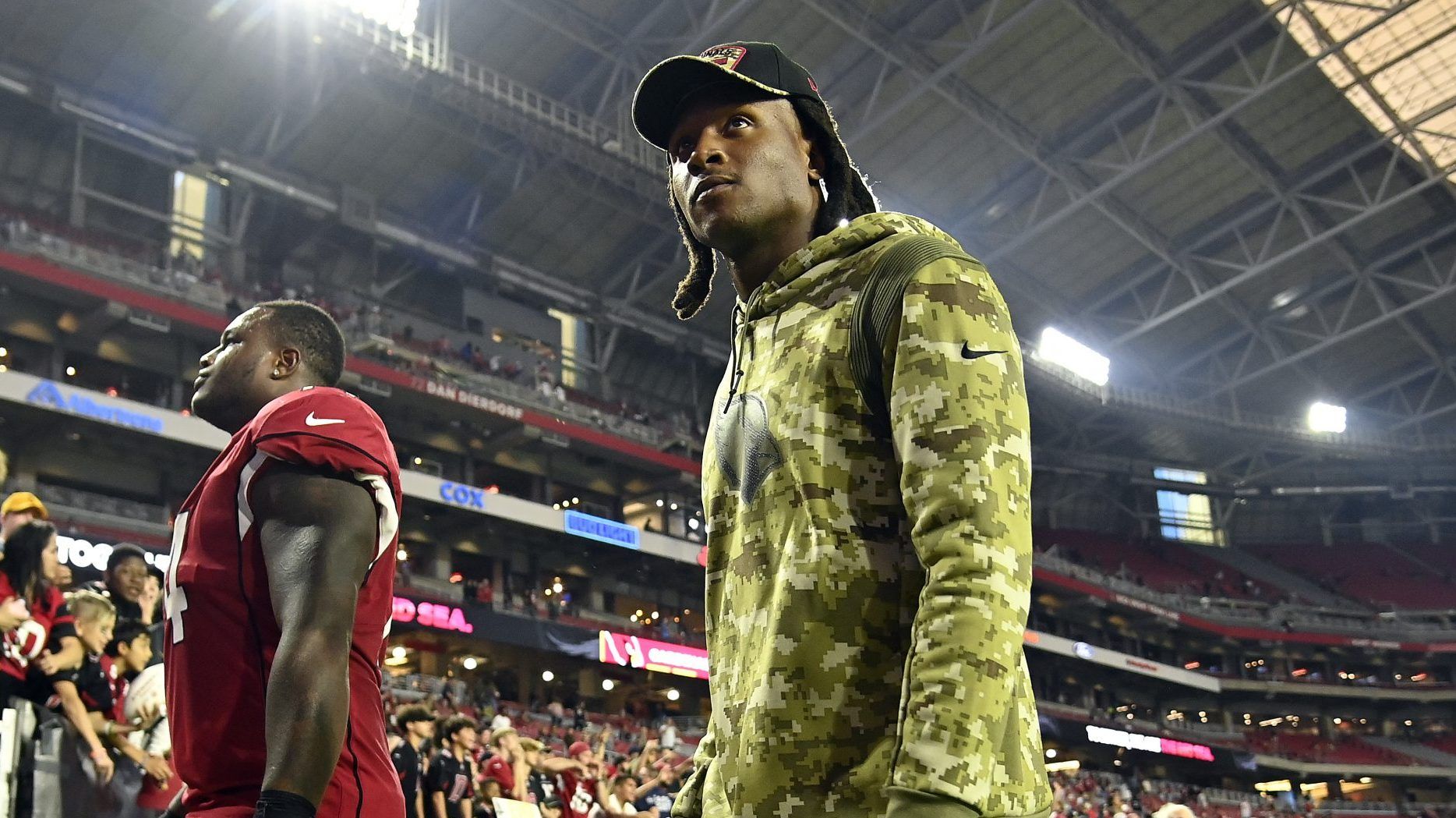Good outweighs bad of Cardinals releasing DeAndre Hopkins
After months of speculation, the Arizona Cardinals finally pulled the trigger and moved on from No. 1 wide receiver DeAndre Hopkins on Friday.
Instead of trading the wideout for some kind of draft compensation, though, Arizona opted to outright release Hopkins after the right deal never materialized despite there being reported suitors.
It was a surprise move that has received criticism given Hopkins’ ability as a pass catcher.
On one side, there’s a real possibility Hopkins heads elsewhere and thrives. When the wide receiver is on the field, he is a game changer. Not receiving anything in return for his departure is rough.
In the wide receivers room, Arizona is now left with Hollywood Brown in a contract year as the team’s defacto No. 1 option followed by Rondale Moore, Zach Pascal and Greg Dortch in an offense currently without a concrete answer at quarterback as Kyler Murray continues his rehab from a torn ACL.
On the other end, Hopkins’ contract that former general manager Steve Keim orchestrated in 2020 put new lead man Monti Ossenfort between a rock and a hard place when it came down to negotiations.
At the end of the day, it’s all about weighing the pros and cons. From an optimistic side of things, the move better positions the Cardinals for the future while also signaling a change of thinking within the front office.
A look at the positives that came out of the Cardinals’ decision to cut bait with Hopkins:
Future flexibility
The biggest positive out of trading Hopkins has to be the cap relief the team is receiving down the line. Hopkins’ cap hit entering the season was $30.7 million before slightly dropping to $26.2 million in 2024.
Because of the pre-June 1 release, the Cardinals are on the hook for all of the $22.6 million dead-money hit this season. That’s a lot to take on financially for a player no longer on the roster, but it’s better for the long term when looking into it.
Waiting until after the June 1 deadline would have spaced out that dead-money hit over two seasons — $11.3 million in each — restricting Ossenfort’s spending in some kind of way in his first two years at the helm.
The Cardinals are not considered playoff contenders this season. There’s no way around it. There are just too many things for Ossenfort and Gannon to reset and fix in one season. Spending — as we’ve already seen — has been minimal this offseason in part because of that reason.
It’s about restocking the cupboard right now. And even though Arizona couldn’t make a deal, getting all of Hopkins’ money off the books this season gives Ossenfort and the Cardinals more to flexibility to work with in 2024 — where they are expected to have a pair of high first-round picks — and beyond.
Message sent
Ossenfort and first-year head coach Jonathan Gannon have preached a team-first culture and football character since they first arrived to the Valley this offseason. They represent two important pillars to the foundation they are building for the organization.
The release of Hopkins is further proof of the culture the duo is trying to establish in Arizona.
Arizona has to have players who are bought into the process of turning things around if it wants to achieve just that.
Hopkins clearly wasn’t, and his last public appearance on the I Am Athlete podcast where he talked about what he was looking for in an organization further solidified that.
At nearly 31 years old and in the backend of this career, Hopkins is looking to win now, especially after missing numerous games over the past two seasons due to injuries. But victories are not something Arizona can guarantee with how it is currently constructed.
He also marches to the beat of his own drum. Just look at his practice habits over the years, where more times than not the wideout didn’t log a full week of work despite being healthy. Is giving star players days off really the best look for a team working toward a revamped culture amid a rebuild?
Regardless of your opinion on the release, this kind of move surely sends a message throughout the organization and locker room.
No more ‘What if?’
Game planning with and without Hopkins are two very different things thanks to what the wide receiver brings to an offense.
That was evident during his time in Arizona, with defenses attacking the Cardinals offense differently depending on Hopkins’ availability.
But now, first-time offensive coordinator Drew Petzing knows what he’s got offensively. All of the “what ifs” surrounding Hopkins that were likely included in the coordinator’s scheme are out with Arizona’s decision.
It’s one less thing hanging over the heads of Petzing and the rest of the offense. If only we could get a concrete update on his starting quarterback.
One less distraction
If anything else, making a decision on Hopkins elevates one less distraction the Cardinals have to navigate around this offseason while they look to right the ship.
The wideout would have been a constant topic for discussion throughout the rest of organized team activities, mandatory minicamp and training camp. Whatever kind of good being fostered out on the practice fields or in the locker room would have likely been suffocated by all the chatter surrounding Hopkins’ future until there was a resolution.
And if Arizona would have let the saga drag out, it would have had to deal with the possibility of being stuck with two seasons of dead money in addition to the unknown that would have continued to hover over Hopkins and the organization.
Follow @Tdrake4sports
Source: Arizona Sports


